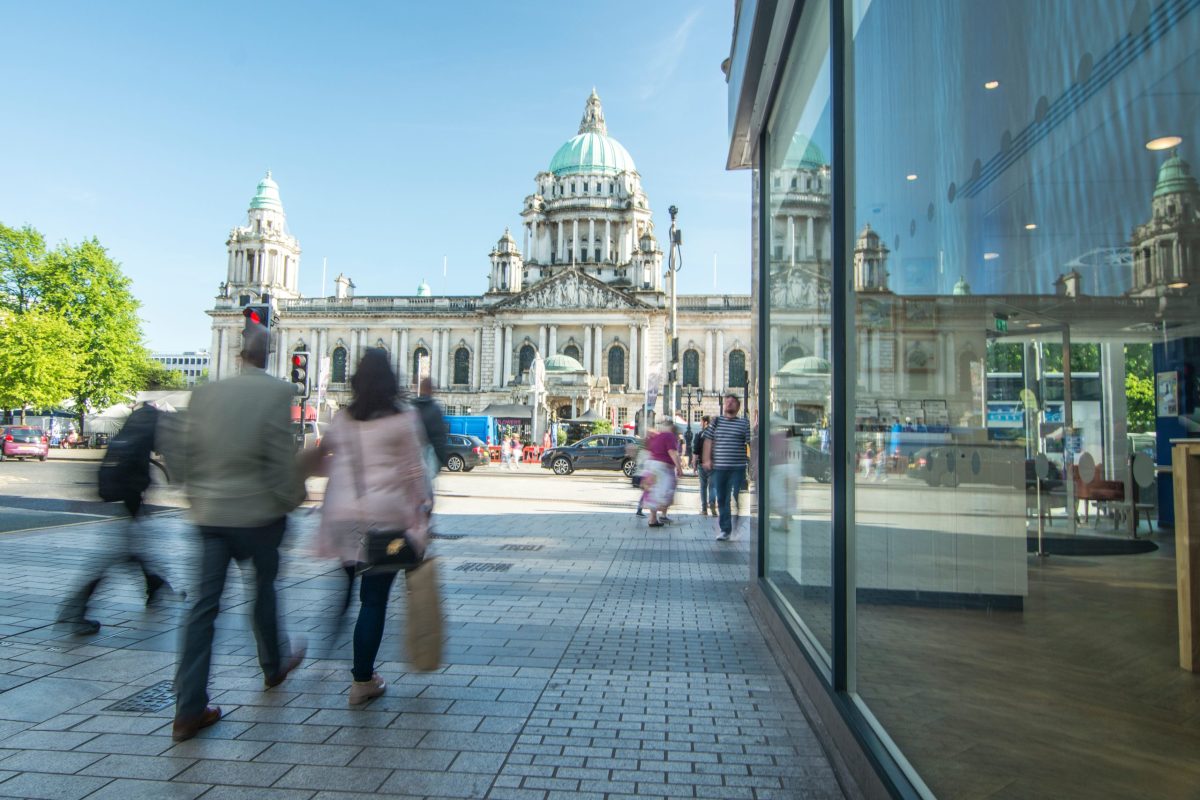Languishing Northern Ireland footfall figures prompt plea for action

Northern Ireland Retail consortium has called for action after the latest footfall figures for Northern Ireland remain well below pre-pandemic levels.
According to the latest NIRC-Sensormatic IQ data, Northern Ireland footfall decreased by 14.5% in March, year on three years (Yo3Y), 3.4 percentage points better than February. This was better than the UK average decline of 15.4% (Yo3Y).
Shopping centre footfall declined by 19.7% in March (Yo3Y) in Northern Ireland, an improvement on the decline of 23.6% in February, and in March, footfall in Belfast decreased by 18.9% (Yo3Y), 5.2 percentage points better than February.
David Lonsdale, Head of Devolved Nations at the British Retail Consortium and Northern Ireland Retail Consortium spokesman, said: “There was a modest uptick in shopper footfall in Northern Ireland last month as people gradually returned to retail destinations.
“However, the fact is footfall continues to languish well down on pre-pandemic levels. Visits to shopping centres and Belfast city centre improved a touch, however the overall results for Northern Ireland were disappointing despite March being the first full trading month since the loosening of stultifying Covid related restrictions in stores.
“Shops themselves are continuing to provide a welcoming and safe shopping experience with a wide range of products, admittedly against a backdrop of economic uncertainty and concerns over the cost of living. Northern Ireland’s shops and the thousands of jobs they provide will only survive with the patronage of the public, and questions remain over what demand will look like in the months ahead.
“As such, these figures should lead to an early response from policy makers as to the health of our retail destinations. There is a pressing need to bring energy and vision to the revival of our retail and high street destinations, as well as a longer-term plan to permanently lower the business rate and adopt a more coherent strategy for the retail industry as Scotland has published.”
Andy Sumpter, Retail Consultant EMEA for Sensormatic Solutions, said: “As we surpass two years since the first Covid-19 lockdown, we might begin to see where retail footfall trends will settle down as retail resets. With the High Street’s recovery hitting its best performance since October and UK shopper traffic tracking ahead of its European counterparts, retailers’ optimism will be met with a healthy dose of realism.
“While Covid-19 restrictions may be loosening, the nation’s belts may start to tighten as the impact of the cost-of-living squeeze and price inflation accelerates, and the knock-on effect of the energy cap rise and increased National Insurance contributions this month remain unknown as they look ahead into April and beyond.
“However, while price sensitivity may be growing among UK consumers, spending and brand loyalty seem to be ‘stickier’ in-store, with our recent research showing over a third were less price sensitive when shopping in-store compared to when they bought items online, and half felt more loyal to the bricks-and-mortar brands they shop with.”
MONTHLY NORTHERN IRELAND RETAIL FOOTFALL (% CHANGE YoY)
| MONTH | ||
| CATEGORY | MAR-22 | FEB-22 |
| NATIONAL TOTAL | 124.6% | 161.7% |
| SHOPPING CENTRE | 186.8% | 224.8% |
| BELFAST | 93.0% | 113.9% |
TOTAL FOOTFALL BY REGION (% CHANGE ON 2019)
| GROWTH RANK | REGION | % GROWTH Yo3Y |
| 1 | North West England | -10.1% |
| 2 | West Midlands | -13.1% |
| 3 | South East England | -13.7% |
| 4 | East of England | -13.8% |
| 5 | East Midlands | -13.9% |
| 6 | South West England | -14.2% |
| 7 | Northern Ireland | -14.5% |
| 8 | Yorkshire and the Humber | -14.7% |
| 9 | England | -14.9% |
| 10 | North East England | -15.2% |
| 11 | Wales | -18.8% |
| 12 | London | -19.7% |
| 13 | Scotland | -21.1% |
TOTAL FOOTFALL BY CITY (% CHANGE ON 2019)
| GROWTH RANK | CITY | % GROWTH Yo3Y |
| 1 | Liverpool | -3.5% |
| 2 | Portsmouth | -9.2% |
| 3 | Manchester | -9.9% |
| 4 | Nottingham | -15.5% |
| 5 | Birmingham | -16.1% |
| 6 | Belfast | -18.9% |
| 7 | Glasgow | -19.5% |
| 8 | Cardiff | -20.0% |
| 9 | London | -22.4% |
| 10 | Leeds | -24.2% |
| 11 | Bristol | -25.5% |







